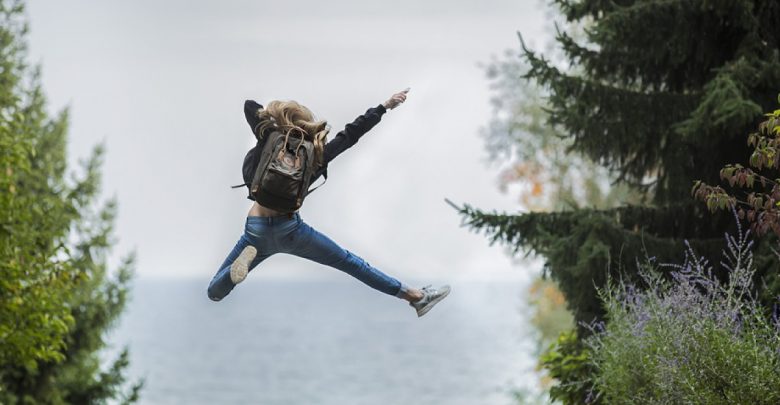Openness and acceptance
As it is mentioned by Gailius and others in the handbook that is referred here often, “Non-formal education is a safe process, where people can be themselves by sharing their life experience, revealing their weak sides without fear of making mistakes and acknowledging them. It is also a space for learning from one’s mistakes and learning from each other, for the mutual growth of both educator and the learner” (2013). Therefore we are talking about a non-judgemental environment and open and non-formal communication. And as educators we start from ourselves in order to walk the talk. This is a tool that provides some insights on why openness is important in training in the youth field as well as some materials for reflection and links “how to develop openness”.

Why did I choose this tool? I chose to construct this tool in a way that several approaches to openness would be covered as openness is an extremely broad concept. I chose the theoretical input from the handbook for youth workers as it is written in a deep, sensitive and comprehensive manner. I like reading it, I hope you will too.
How does this apply to being a trainer? In training both local or international we are faced with working with(in) diversity. Of people, contexts, situations, characters, backgrounds, etc. therefore it is important to develop and maintain openness, which according to many resources, is one of the key attitudes of a successful facilitator (trainer in the youth field as well). Not to forget that maintaining an open and non-formal communication is one of the key principles of non-formal education, which we are practicing in the European training work.
Main content:
“According to humanist psychology and pedagogy, being taken seriously, being understood and trusting the honesty and reliability of others are the factors that contribute mostly to the atmosphere of growth and unfolding in a group. The most prominent representative of this school and one of our (indirect) teachers is psychotherapist C. Rogers, whose models of work with people and groups of people spread in the area of psychology as well as amongst youth workers. According to C. Rogers, in order for a youth worker to be able to create the atmosphere of growth, three main attitudes, or qualities (possessed or acquired) are important:
- Acceptance (unconditional acceptance)
- Empathy
- Congruence (being consistent)” (Gailius et al, 2013)
In this tool we only focus on the unconditional acceptance as an aspect of openness that is needed in work with groups in order to support learners in their learning process.
“Unconditional acceptance is best understood by illustrating it with the opposite phenomenon, i.e. ‘conditional acceptance’: if you love me, then I will tidy up the rooms; if you are always spontaneous, active, happy, then I will love you… and so on. We could come up with dozens of examples, because they are familiar from our lives. Conditional acceptance says ‘I know what is good for you, I know what you should be; you are right in this case if you accept what I offer or do’. In this case the effect on people is simple – they don’t learn and don’t understand themselves or their experiences, but only fulfil the demands of others. People like that are not autonomous, i.e. independent. Unconditional acceptance means: ‘I accept you the way you are. I am attentive to you, even when you don‘t act as I imagine you should. I value you without any preconditions. I am attentive to your mind, your feelings, your values, your beliefs and your wishes. I listen to you when you express your opinions. I have my own wishes and expectations towards you, but our relation does not depend on whether you fulfil them or not. You are free. I am not indifferent to what you do, but I respect your independence and ability to take decisions, you have your own feelings and experiences. I would like to learn from you.’ The effect of acceptance is: ‘I am learning to be confident in myself, guide myself and take responsibility. I can overcome constant fear – so if I do something differently than expected by others I am not fearful of other’s reactions. I will learn to be confident with my experiences and appreciate them, use them as a renewable resource for making decisions and taking responsibility’. In other words, acceptance is one of the attitudes which leads us to be conscious and liberated. It is an on-going work with oneself, since if you want to convey that to others or help them to develop, you firstly have to accept yourself the way you are.” (Gailius et al., 2013)
Openness
Try watching a TedTalk about openness and assumption
Write down a situation when you quickly assumed something about people or a situation which turned out the other way. Reflect on where do these assumption came from, what would have helped you to not misjudge the situation.
According to T-kit on intercultural learning, openness is one of the values/attitudes that are developed during intercultural learning process: “Openness implies the willingness to move beyond one’s comfort zone and pursue knowledge in spite of anxious feelings. It is the force that leads people to discover other beliefs and world views, while questioning their own, to develop new perceptions and to accept that the construction of something new implies the possible breakdown of the old – such as perceptions, ideas and lifestyles.” (Georgescu, 2018)
Here are some webpages that provide strategies to develop openness as a personal trait:
- Unlock 10 ways to be more open https://www.positivelypresent.com/2009/04/are-you-open-.html
- Five ways to practice open-mindedness every day http://theadviceable.com/2018/03/11/how-to-be-open-minded-in-life/
- 5 key habits to becoming more open-minded https://www.followyourownrhythm.com/blog-1/2016/10/31/5-key-habits-to-becoming-more-open-minded?rq=%20an%20open%20mind
Reflection questions:
- How would you define openness?
- What helps you develop the attitude of openness and acceptance?
- What stands in the way of being more open?
- Which ones of the “become more open” strategies work for you? Which ones you are sceptical about? Why?
Exercises:
How to apply it in everyday life:
- Have an “assumptions journal” for a week (or more) and write down the assumptions that you catch yourself making during the days. This way you will be able to build awareness on situations or people that you tend to prejudge or that strike you as uncomfortable. Finding reasons behind it will be one of the steps towards openness.
- Try out at least 3 of the how to become more open strategies.






